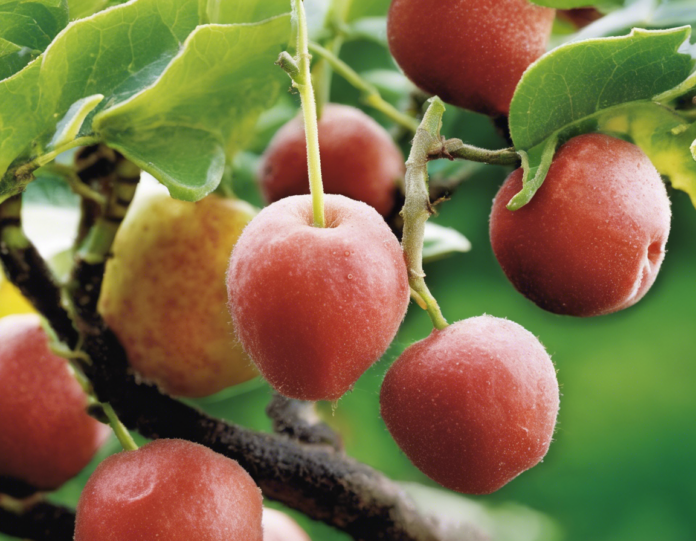When we think about fruits, we often think about the sweet and colorful produce we see in our grocery stores. However, the process of fruit formation in plants is a complex and fascinating one that starts with fertilization. In this article, we will explore the key steps involved in fruit formation after fertilization in plants.
Fertilization in Plants
Fertilization in plants is the process by which the male gamete, contained within pollen, fuses with the female gamete, contained within the ovule. This fusion leads to the formation of a zygote, which is the first cell of the new plant. After fertilization, several key steps take place to transform the ovary into a fruit.
Step 1: Ovule Development
After fertilization, the ovule develops into a seed. The ovary, which surrounds the ovule, also begins to transform into a fruit. The ovule contains the embryo sac, where the female gamete is located. As the seed develops, the ovary undergoes changes to support and protect the developing seed.
Step 2: Ovary Growth
As the ovule develops into a seed, the ovary starts to grow and enlarge. This growth is essential for the formation of the fruit, as the ovary will eventually become the fruit tissue that surrounds the seeds. The ovary wall undergoes changes in texture, color, and chemical composition to develop into the diverse range of fruits we see in nature.
Step 3: Fruit Maturation
Once the ovule has developed into a seed and the ovary has grown into a fruit, the next step is fruit maturation. During this stage, the fruit undergoes physiological and biochemical changes to become ripe and ready for seed dispersal. These changes can include alterations in color, flavor, texture, and aroma.
Step 4: Seed Dispersal
One of the primary functions of fruits is to facilitate seed dispersal. Fruits have evolved to entice animals to eat them, thereby aiding in the dispersal of seeds. Through various mechanisms such as wind dispersal, animal dispersal, and water dispersal, seeds are dispersed away from the parent plant to new locations where they can germinate and grow into new plants.
Step 5: Fruit Ripening
Ripening is a crucial stage in fruit development. This process involves the softening of the fruit, changes in color, and the accumulation of sugars and aromatic compounds. Ethylene, a plant hormone, plays a significant role in fruit ripening by triggering various physiological and biochemical changes. Ripening is essential for making the fruit attractive to animals for seed dispersal.
Importance of Fruit Formation
Fruit formation is a vital process in the life cycle of plants. Fruits not only protect and nourish seeds but also play a crucial role in seed dispersal. By enticing animals to consume them, fruits ensure the survival and dispersal of plant species. Additionally, fruits provide essential nutrients for animals and humans, making them an integral part of our diet and ecosystem.
Frequently Asked Questions (FAQs)
Q1: What is the difference between a fruit and a vegetable?
A: In botanical terms, fruits are the mature ovaries of flowering plants that contain seeds, while vegetables are other plant parts such as roots, stems, and leaves.
Q2: How do fruits develop without fertilization?
A: Some fruits, called parthenocarpic fruits, can develop without fertilization. These fruits are formed either through the stimulation of growth hormones or genetic mutations that bypass the need for pollination.
Q3: Can all flowers develop into fruits?
A: No, not all flowers develop into fruits. Only flowers that have been successfully fertilized and undergone pollination will develop into fruits.
Q4: How long does it take for a fruit to ripen after fertilization?
A: The time it takes for a fruit to ripen after fertilization varies depending on the plant species and environmental conditions. It can range from a few days to several months.
Q5: Why is seed dispersal important for plant survival?
A: Seed dispersal is crucial for plant survival as it helps in spreading seeds away from the parent plant, reducing competition among offspring and increasing the chances of successful germination and growth.
In conclusion, fruit formation after fertilization in plants is a complex and essential process that ensures the reproduction and survival of plant species. By understanding the key steps involved in fruit development, we can appreciate the beauty and significance of fruits in the plant kingdom.

